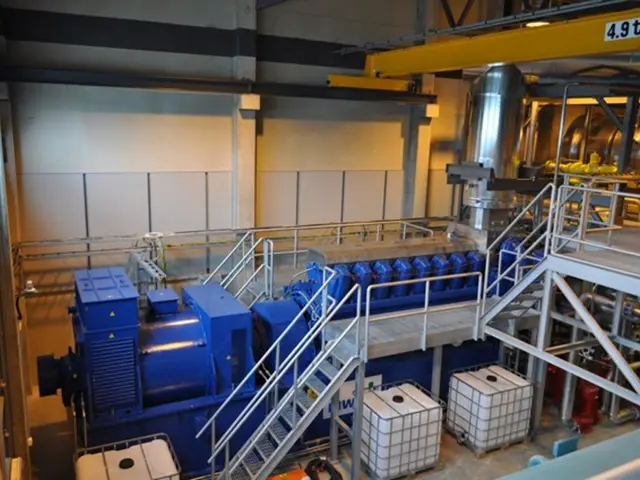Stepping Out of the Frustration Trap at Work: From Annoyance to Success
Halting the Downward Slope: A Guide on Breaking the Cycle of Negativity
Are you finding your workday more burdensome than gratifying? If dissatisfaction becomes a pattern, your productivity and well-being can suffer greatly. Here's how to recognize the negative cycle and break free from it.
It's the third email of the day, and it's not even related to your job. You're copied again, and there's that colleague who won't stop chatting when you have pressing priorities. You've reached your limit, but these irritants seem unavoidable? Do minor annoyances now consume your thoughts, and you find yourself frustrated by decisions and changes from the start?
Those who consistently focus on the negative aspects of their job can quickly slip into dissatisfaction. But what can be done when the scales tip toward frustration instead of enjoyment at work?
Understanding the Negative Spiral at Work
A toxic work environment can develop due to a combination of internal and external factors. It often creeps up slowly and escalates if not addressed in a timely manner. "Negative thoughts lead to more negative thoughts," says career coach Ragnhild Struss. The more annoying things that happen, the more you feel validated in your negative perspective.
Uncovering the Root Causes
External factors — poor work environment, overload, or lack of recognition — are rarely the sole causes, says Struss. "The internal factors create fertile ground upon which an external situation, a sentence, a circumstance can take root, leading to dissatisfaction," explains Struss. Internal factors include:
- Self-doubt
- Perfectionism
- Low self-efficacy
- A pessimistic outlook combined with negative beliefs such as "I'm only good enough if I'm perfect."
Recognizing the Signs
It's essential to identify when you're in the thick of it and not just going through a rough patch. "We often fail to notice how things are gradually becoming worse," says Laura Venz, professor of work and organizational psychology at Leuphana University Lüneburg. Take note of your behavior, reflect on your thoughts and feelings, and take feedback from colleagues, superiors, friends, or family seriously.
Common Warning Signs
Typical signs include:
- Persistent frustration
- Irritability and anger
- Increased susceptibility to conflicts and disputes
- Emotional exhaustion or burnout symptoms
- Reduced motivation and internal withdrawal
- Concentration problems
- Memory problems
- Decision-making difficulties
- Chronic fatigue
- Sleep disturbances
- Headaches
- Muscle tension
Short-term Solutions
In times of intense frustration or overwhelming situations, Struss advises consciously pausing, taking a deep breath, and stepping back internally. This breaks the automatic response and helps create distance from the stressful situation.
Personal Practices such as meditation, breathing exercises, or brief body scans can help gain insight into what's truly happening in the moment. This aids in preventing impulsive reactions and promotes conscious, mindful action, such as distancing oneself from stressful situations or taking a short walk outside.
Long-term Solutions
It's crucial to acknowledge when you're stuck in a negative spiral. Venz recommends first analyzing your situation. Can the workload be reduced, for instance? "Then, it's about how the person can better manage the stress," Venz states.
Venz stresses that the responsibility does not rest solely on the individual. "If the workload is too high, it needs to be changed, not the person," clarifies Venz.
Helpful strategies can include better time management, conflict resolution skills in the team, or more actual relaxation in leisure time. "However, if the manager is the problem, one must change the situation, i.e., find a new job," Venz emphasizes.
Addressing Internal Factors
Struss considers "job crafting" the key tool. This means consciously shaping the job to fit one's personality, needs, and skills. Focus on tasks, work methods, relationships, and attitudes to achieve sustainable satisfaction.
Professional Assistance
At first, it's still possible to find one's own ways. Talk to colleagues, your partner, or friends. However, if one is so deep in it that they can't get out or if it takes on pathological characteristics, external help is needed.
When it comes to breaking free from the cycle, professional reflection in the form of coaching or psychological support can be invaluable. This helps establish new, positive patterns.
Prevention Measures
It's vital to create conditions that maintain satisfaction and inner stability sustainably. "A negative spiral is a psychological wake-up call," says Struss. Effective prevention lies in living proactively and authentically, rather than reactively.
Recognizing and Addressing Contributing Factors
Internal and external factors can significantly contribute to a negative spiral of frustration in the workplace. Understanding these factors is essential for recognizing and addressing them.
Internal Factors can Include
- Poor Leadership: Lack of clear direction, vision, and inadequate communication.
- Toxic Communication: Gossip, passive-aggressive behavior, and top-down commands.
- Misaligned Values: When company values don't align with actions, trust is eroded, leading to cynicism and disengagement.
- Lack of Accountability: Unchecked toxic behaviors and poor performance can foster resentment and unfairness.
- Inadequate Conflict Resolution: Ignoring or mishandling conflicts can create lingering issues.
External Factors can Include
- Unrealistic Expectations: Heavy workloads and high demands without adequate support can lead to burnout.
- Blurred Work-Life Boundaries: Constant availability and lack of clear boundaries can exacerbate stress.
- Workplace Incivility: Incidents of incivility can trigger negative emotional responses such as stress and anxiety.
- In the context of workplace well-being, vocational training programs could incorporate modules on mental-health awareness and stress management to equip individuals with coping strategies for overcoming frustration at work.
- To foster a healthier work environment, community policies could emphasize workplace-wellness initiatives, encouraging health-and-wellness practices that promote emotional and mental well-being, such as offering employee assistance programs for mental-health support.
- To further support career development and education-and-self-development, workplace programs could incorporate discussions on personal values and vocational interests, empowering individuals to seek roles that align with their values and long-term goals, reducing potential causes of frustration.








